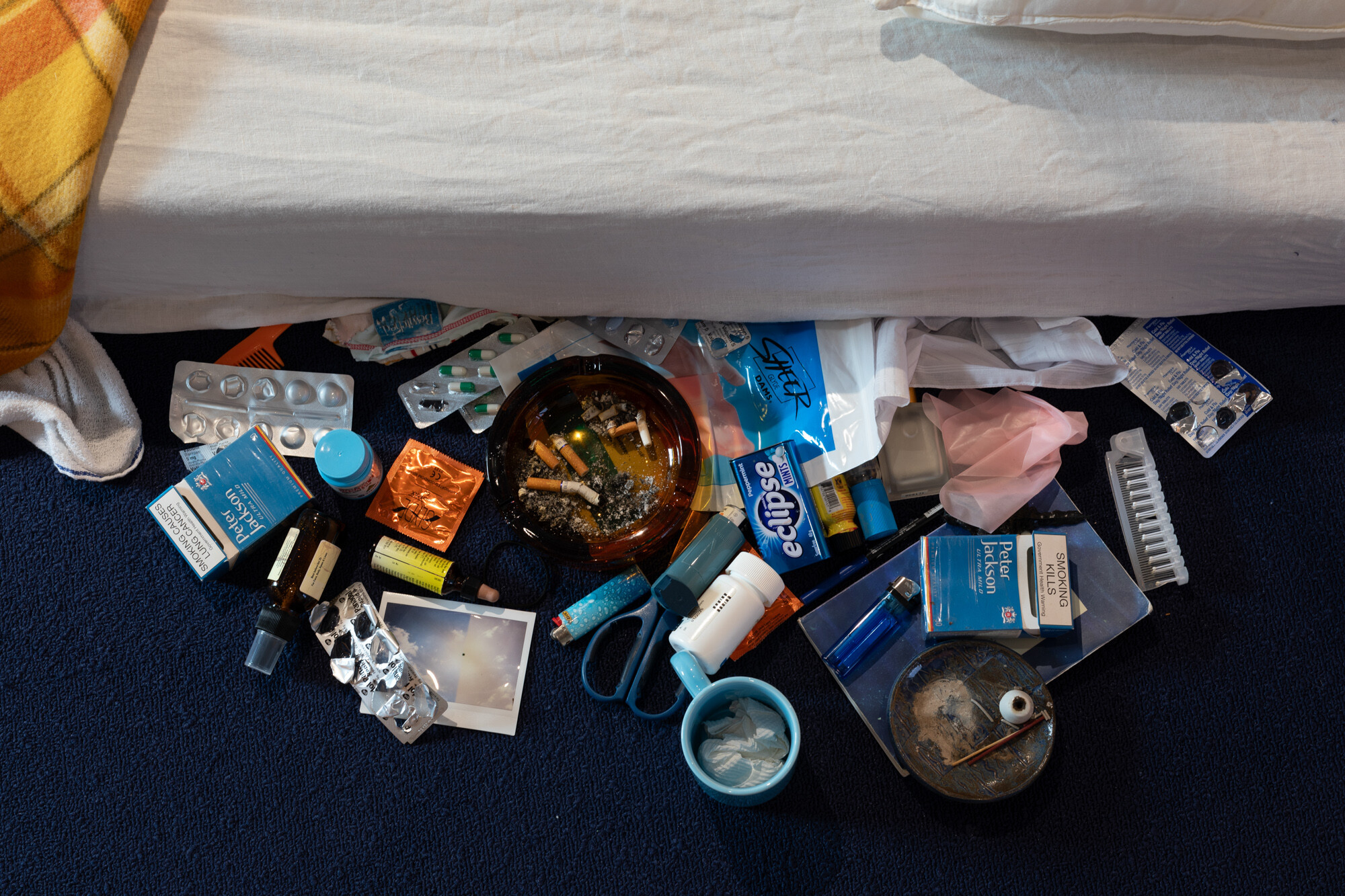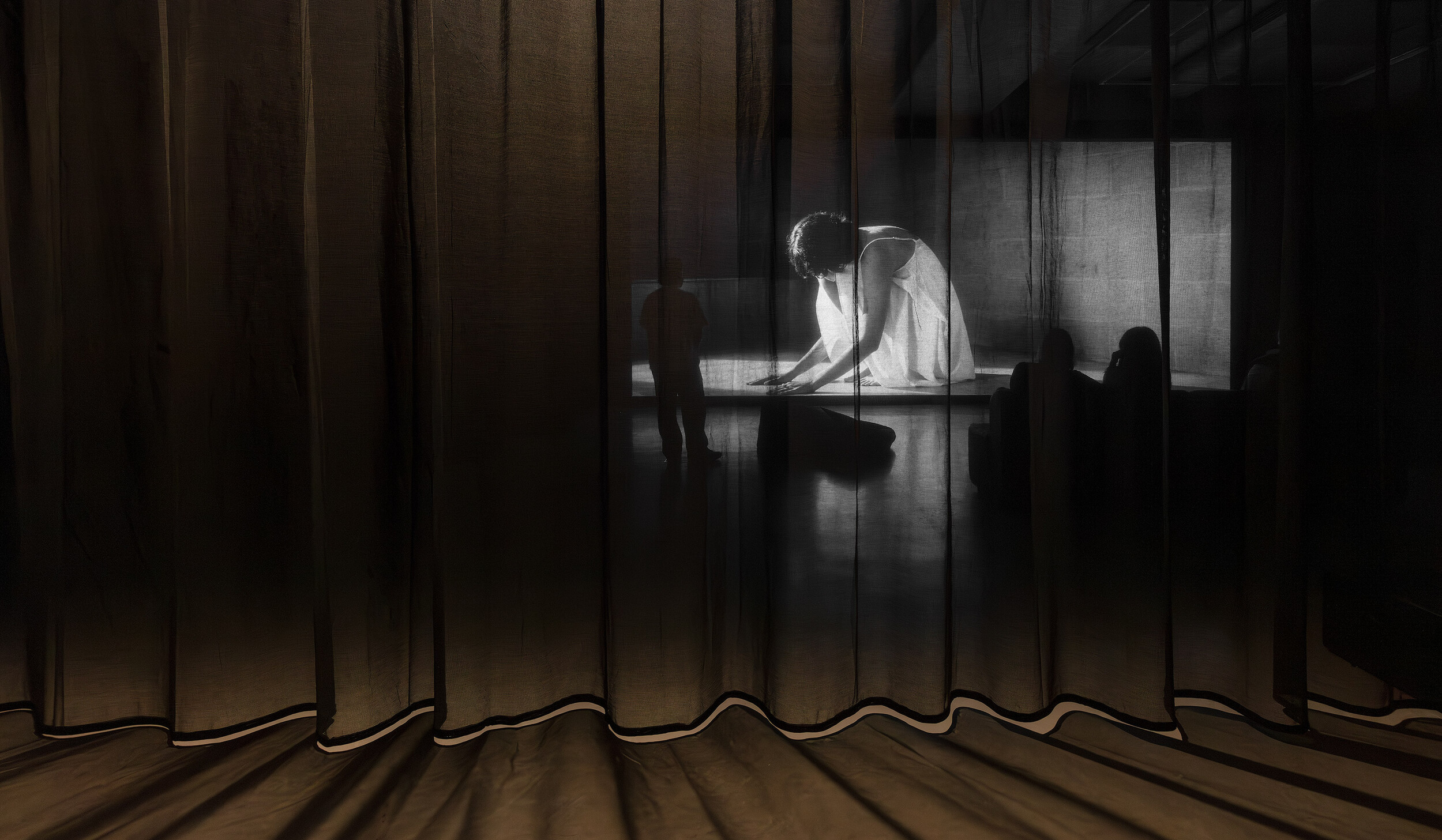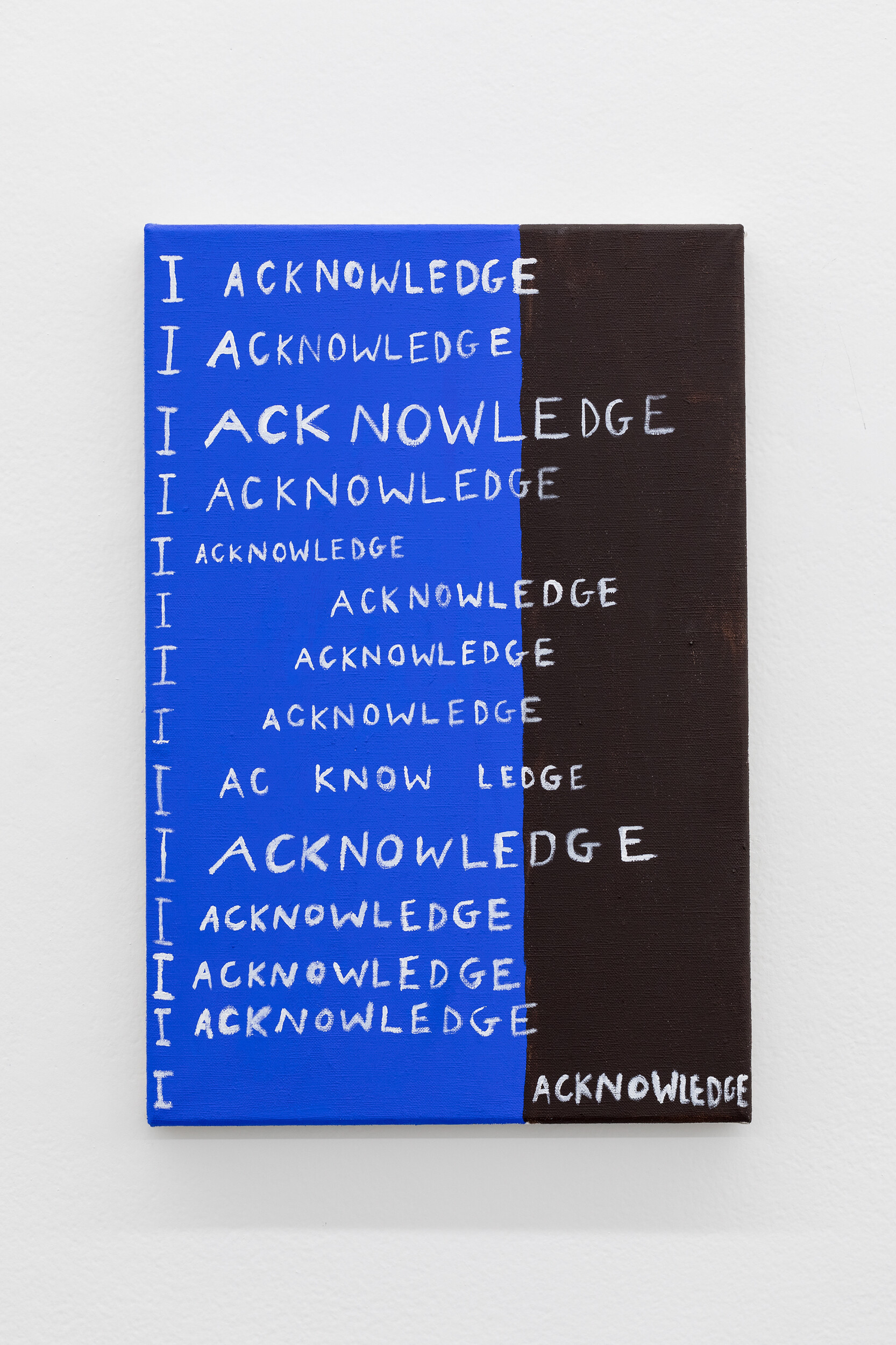Alan Adler, Large prints and facsimile photobooth strips, c. 1980-2000 in Auto-Photo: A Life in Portraits, RMIT Gallery, Melbourne, 2025. Photo: Christian Capurro.
Auto Photo: A Life in Portraits
Lucy Taylor Schmitzer
Stepping into Auto Photo: A Life in Portraits, I’m surrounded by a panorama of black and white photo strips. Hundreds of uniform portraits of the same man, ageing from young to old, envelop me. I seek out a moment of reprieve in the half dozen selected frames enlarged around the walls—but I’m drawn back in by the belt of monotonous photographs, eyes swimming from face to face, pulled along from moment to moment.
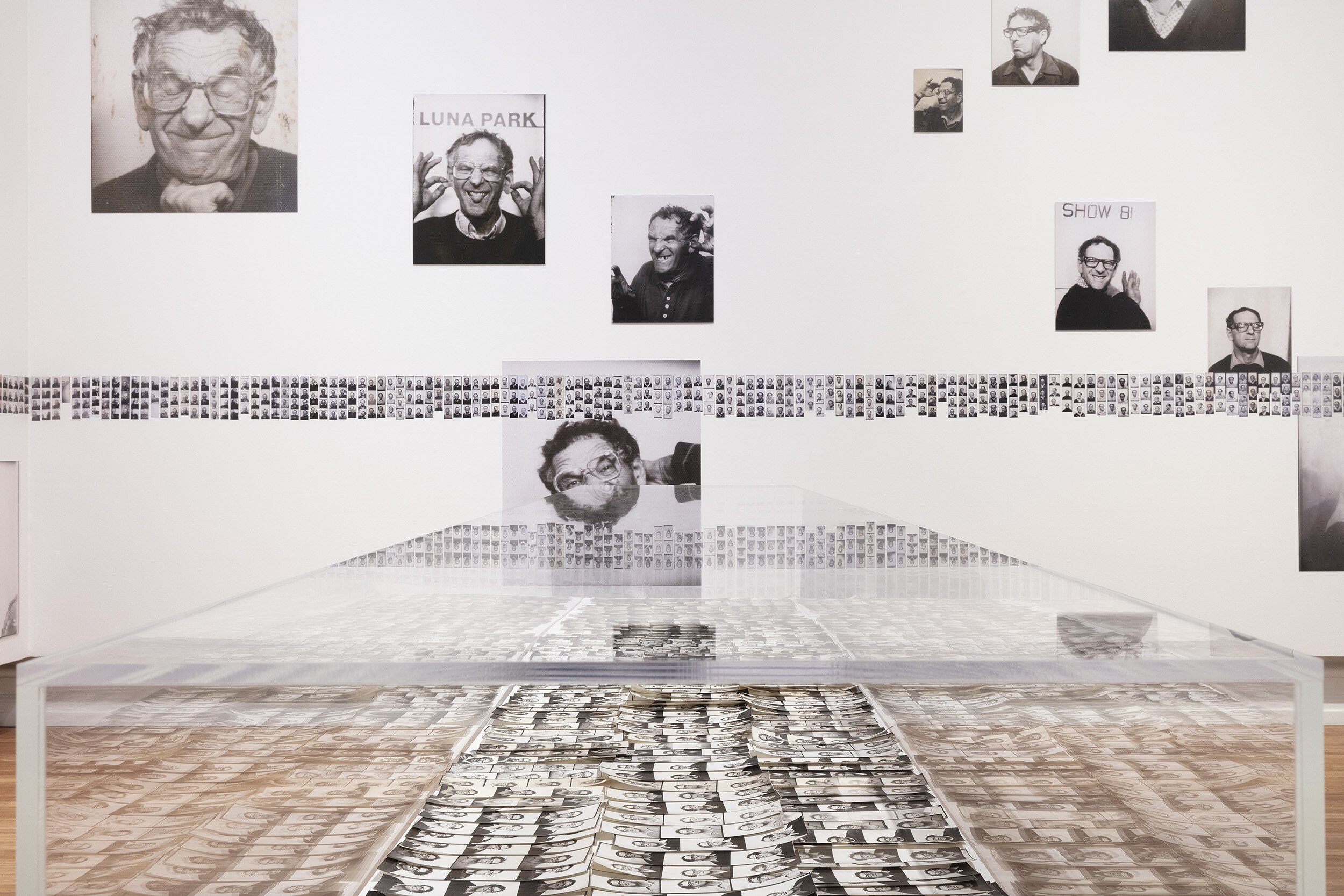
Alan Adler, Large prints and photobooth strips in Auto-Photo: A Life in Portraits, RMIT Gallery, Melbourne, 2025. Photo: Christian Capurro.
Our sitter is Alan Adler (1932–2024), the custodian of Melbourne’s photobooths for fifty years. This Centre of Contemporary Photography exhibition, hosted at RMIT Gallery, is dedicated in equal parts to Adler and the technology of the photobooth itself. Full of contradictions, this machine is a textbook gimmick: an easy way to quickly and cheaply spit out uniform strips of photographs. Adler’s collection of test strips instead reveal the laborious process of keeping them operational. The promise of simplicity makes its complexity all the more visible. The booth, it turns out, is a tool that requires repair, its unpredictability contrasted against the simple repetition of its output.
Tucked alongside the timeline is part of a documentary by Christopher Sutherland (one half of Metro Auto Photo), recording Adler demonstrating the processes of maintaining the machines. Each test strip documents one of these services. In accumulating these moments of work, Adler’s project recalls the processes of endurance art—I think of Taiwanese artist Teching Hsieh’s Time Clock Piece (One Year Performance 1980–81) (1980-81), photographing himself with a punch clock on the hour every hour for a year. Drawn from his genuine work on the booths, Adler’s process is a more accessible, less esoteric form of endurance, oriented around his working life.
Looking again at the walls, moments jump out from the monotony: interspersed with Alder’s standard neutral face and closed eyes, he cracks a smile, pulls a face, and sometimes introduces a cat pulled from nowhere. Moving deeper into the galleries, I find myself surrounded by strips from a foray into colour machines. The effect is psychedelic, a hazy swamp of peach and pale blue confronting us with the unpredictable imperfections and material affect of the photobooth.

Alan Adler, Large prints and facsimile photobooth strips, c. 1980-2000 in Auto-Photo: A Life in Portraits, RMIT Gallery, Melbourne, 2025. Photo: Christian Capurro.
Framed as an enormous, durational art practice, Adler’s strips point back to the photobooth as a machine that exposes its complexity by insisting on its own simplicity. This is contextualised with a series of other artists who have also been invited to display in the exhibition. Patrick Pound’s contribution speaks to a similar curiosity to find unusual moments within the rote output of the booths. From his collection of thousands of photographs, Pound picks out what might otherwise be mistakes and elevates them to objects worthy of our attention. Photos of empty booths, failing to capture any portrait, or people awkwardly caught, not yet posed and ready, become artefacts of the booth’s inherent distortion.
More actively, Ruth O’Leary embraces the dramatic contradictions of the photobooth. Exploiting its serialised format, she treats the machine as a stage, fragmenting herself with mirrors and masks to create unsettling self-portraits. Within the visual interest of each series, moments expose the shutter’s unpredictability: a misplaced hand, slipping mask or misshapen reflection.

Metro Auto Photo, Found photobooth strips, c. 1972-2025 and Ruth O’Leary, Photobooth strips, 1984-2025 in Auto-Photo: A Life in Portraits, RMIT Gallery, Melbourne, 2025. Photo: Christian Capurro.
Repeatedly, the exhibition encourages me to seek out unique moments within the strips’ seemingly fixed format. At the entrance, the audience of the exhibition is asked to engage in this practice of recognition when confronted with the collection of “lost strips” that Metro Auto Photo has tacked to the wall at the entrance to the gallery. They call on us to recognise someone and reunite them with their artefact.
Continuously, Auto Photo considers how the photobooth both collapses and expands time. While part of the allure is as an “instant” form of photography, this convenience is paired with the commitment of artists who developed multi-year, or even lifelong, series using the technology. Mark S. Holsworth’s ongoing Photo Booth – readymade in 3 minutes (1984–continuing), an accordion photobook of annual strips, undulates in one of the vitrines. The folded stack of pages forms a testament to years of returning to the photobooth. Within this one project, the majority of photos were taken on Flinders Street, Melbourne’s most beloved photobooth.
For all its convenience, the photobooth is tied down, as much a place as a contraption. The Flinders Street booth particularly emerges as a creative epicentre, as the text written by each contributor reveals a specific connection to this one booth. This location is still operational, at a walkable distance from the show. In 2018 Metro Auto Photo ran a community campaign to save the booth from removal. Now running the Flinders site and restoring Adler’s other booths, Sutherland and Jessie Norman continue the work to keep the machines operational.
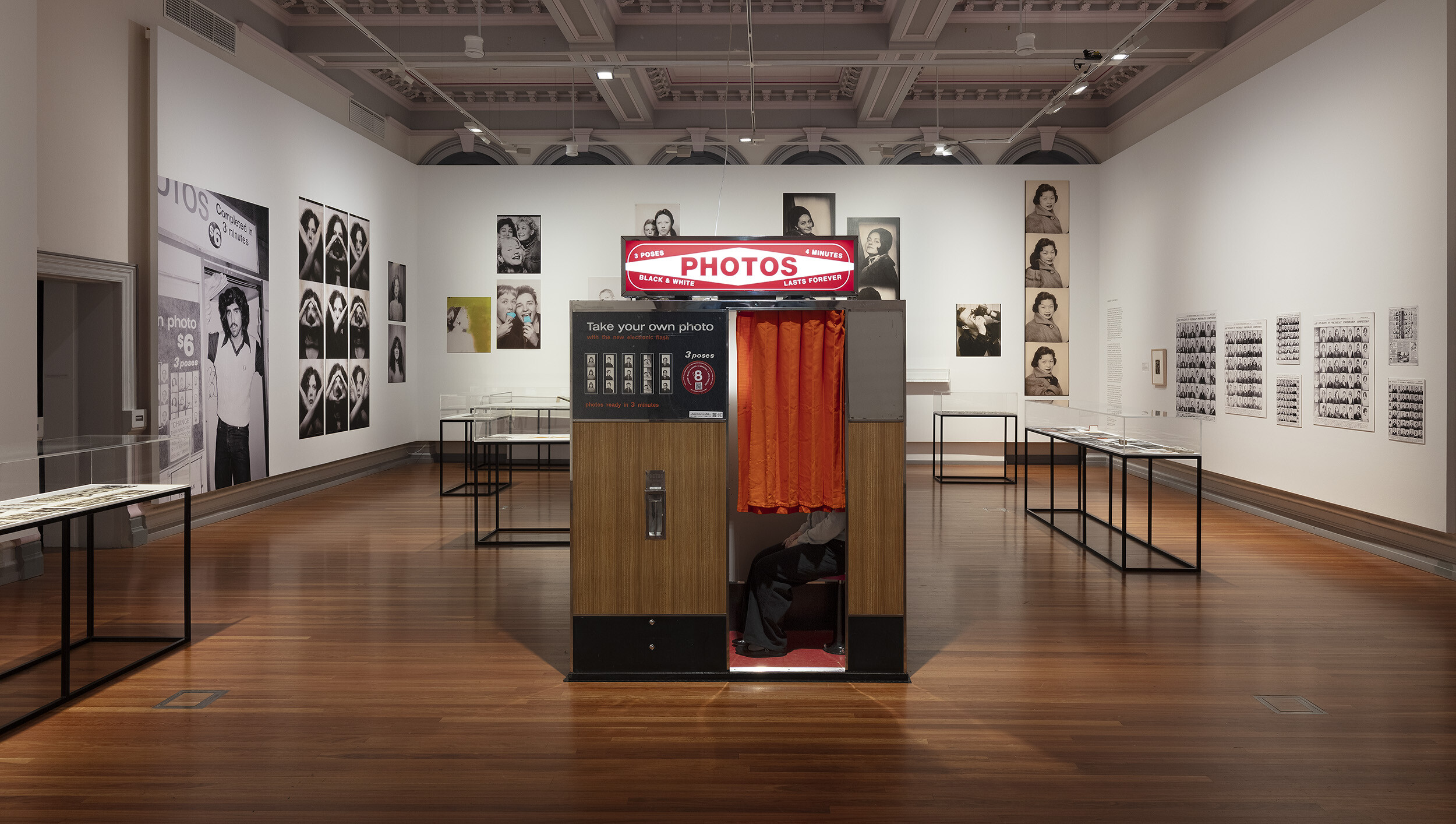
Metro Auto Photo, Photo-Me Model 17, c. 1967 in Auto-Photo: A Life in Portraits, RMIT Gallery, Melbourne, 2025. Photo: Christian Capurro.
The exhibition charts a networked community of creatives that is made more urgent by the displacement of the Centre for Contemporary Photography. Auto Photo, originally planned for 2024, was postponed after the defunding of the CCP forced them to move out of their gallery premises in August last year—and meant that Adler never saw the show before he passed. The exhibition was only made possible due to the collaborative support of CCP donors, supporters, and community, and RMIT Gallery joining as a host partner. In the same way, our attention is drawn to the essential contribution of Adler to keep these supposedly simple machines running, Auto Photo signifies the contributions—the work—that make public exhibitions like these possible. As well as reinvigorating public interest in the photobooth, the exhibition and its many collaborators attest to the importance of the CCP as a creative site.
Adler’s collection, a testament to his labour to keep the machines running, echoes within each creative project in Auto Photo. While the photobooth presents itself as an “auto(nomous)” machine, it contradicts this autonomy with a very real reliance on the technician. And if the photobooth can be an art machine, can the technician, too, be an artist? Throughout, Auto Photo makes visible Adler’s role as an invisible collaborator of the photobooths. Presented in a gallery, the accumulation of Adler’s strips moves beyond an archive of individual portraits to a creative project of self-documentary. Taking in all the photos all at once, the strips resolve into a portrait of the labour intertwined with these machines.
Lucy Taylor Schmitzer is a writer and arts worker based in Naarm/Melbourne.
